Happy September! We’re back with a new set of playtest materials for you to try out at your table. Player’s Handbook Playtest 7 revises five classes and introduces two new subclasses.
Feel free to jump right into the playtest materials, or click below for highlights on key changes you’ll find in this Unearthed Arcana, with insights from Jeremy Crawford, Game Architect of Dungeons & Dragons.
Class Changes in Player’s Handbook Playtest 7
Player’s Handbook Playtest 7 updates the barbarian, fighter, sorcerer, warlock, and wizard and introduces two new subclasses, the Path of the World Tree barbarian and the Brawler fighter. You’ll also find revised spells and weapons.
The following table highlights the more significant revisions to the classes included in this UA. You’ll also find more general updates below it.
|
Class |
Highlights |
|---|---|
|
|
|
|
|
|
|
|
|
In this UA, you’ll see the return of class spell lists. Although grouping spells under the Arcane, Divine, and Primal spell lists was a fun experiment, we felt the benefits did not outweigh some of the new challenges we faced.
“While those lists worked well for certain classes—for instance, it was a big boon for the ranger to gain access to the entire Primal list—we found for other classes that shifting to those big lists tended to dampen their identity,” explained Crawford. The wizard, for example, is known to have the largest selection of spells of any class. By giving other classes access to the same list of spells, players felt that the wizard’s identity suffered.
In a similar vein, although we had fun experimenting with the bard getting access to the Arcane, Divine, or Primal spell list, having that selection degraded the bard’s identity.
Features From Tasha’s Ported Over
Early in playtests, we were careful about how much material from Tasha’s Cauldron of Everything we imported. But players have frequently asked for certain features to be made standard in the 2024 Player’s Handbook. So, you’ll notice in this UA that more popular features from Tasha’s are included. You can expect to see this for classes that appeared in Player’s Handbook Playtest 6, as well.
Spell Changes
You’ll also find updates to a few spells in this UA. The sorcerer-exclusive spells arcane eruption and sorcerous burst were well-received in Player’s Handbook Playtest 5 and return here with changes. Counterspell and jump have also been updated.
Barbarian
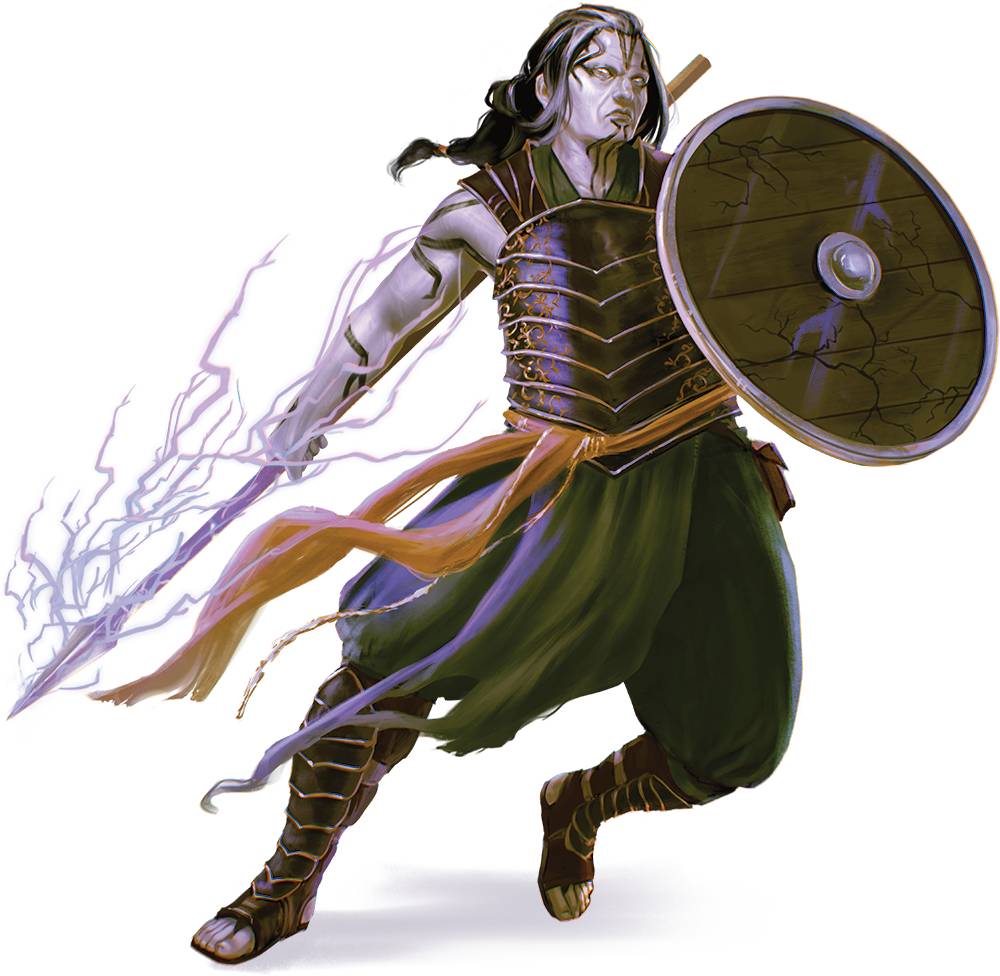
Barbarians are not just brutes that can swing a greataxe well—though they very much can be —they are warriors who revel in the wilds and on the chaotic streets of cities. Their rage reflects their capacity to embrace and hone their keen instincts and raw physicality.
Player’s Handbook Playtest 7 updates core barbarian features as well as subclasses. It also introduces the all-new Path of the World Tree subclass. Below, we cover some highlights of changes. But we encourage you to jump into this latest packet of UA materials for a complete look at revisions.
Reckless Attack Has Been Buffed
The 2014 barbarian’s Reckless Attack grants advantage on melee weapon attack rolls made using Strength until the end of your turn. This UA makes some quality-of-life improvements, now granting advantage on attack rolls made using Strength until the start of your next turn. This means your opportunity attacks now benefit from this feature.
Hitch a Ride With the Path of the World Tree
“The Path of the World Tree is a barbarian subclass that delves into the cosmic story of D&D that there is this world tree that connects all worlds,” said Crawford. With this barbarian subclass, your rage links you to the world tree Yggdrasil, granting you primarily defensive and utility features.
Notably, the subclass’s capstone feature allows you and your friends to traverse the planes along Yggdrasil’s branches.
More Animals to Choose As the Path of the Wild Heart
Formerly known as the Path of the Totem Warrior, the Path of the Wild Heart allows the barbarian to emulate the beasts of the natural world, and break skulls while doing so.
If the name of this subclass gives you pause, there’s a reason for that: “People who have played Baldur’s Gate 3 will recognize the name,” said Crawford. “What many people don’t know … is I personally worked with Larian to name that subclass. And we knew at the time that we would end up unifying the name when we came to the 2024 Player’s Handbook.”
In this subclass, you’ll find the animal options you can choose from have been expanded, and existing options have been updated.
Notably, the Bear no longer grants resistance to all but psychic damage. Instead, you’ll choose two damage types to be resistant to at the start of your rage. Further, the Eagle now lets you Dash or Disengage as a bonus action, and the Wolf’s effect has been extended to 10 feet, up from 5 feet.
You’ll see changes for higher-level options, as well. And for those fearing commitment, you can now change the options you choose when you level up.
The Path of the Zealot Gets Better Healing
The barbarian subclass that channels divine fury has been updated from its first appearance in Xanathar’s Guide to Everything. You now get to choose your damage type each time Divine Fury triggers, and Warrior of the Gods has been expanded so that you gain additional hit points whenever the party cleric throws a healing word your way (up to a certain number of times).
You can also burn your uses of rage to get more uses of Zealous Presence. Finally, since the original Rage Beyond Death subclass feature has been integrated into the barbarian’s core class features, you now get to turn into a flying, spectral warrior whenever you restore hit points with Relentless Rage.
Pump Your Crits, Strength, and Constitution
Barbarians are known for their mean melee damage, and we’re leaning into that more. The Brutal Critical feature now comes online at 9th level, as opposed to 11th level, and the damage you deal increases by a d12 at 13th level (2d12) and 17th level (3d12), no matter what kind of weapon you’re wielding.
Also, Primal Champion is back as the barbarian capstone feature, and increases your Strength and Constitution by 4, up to a max of 24.
Fighter
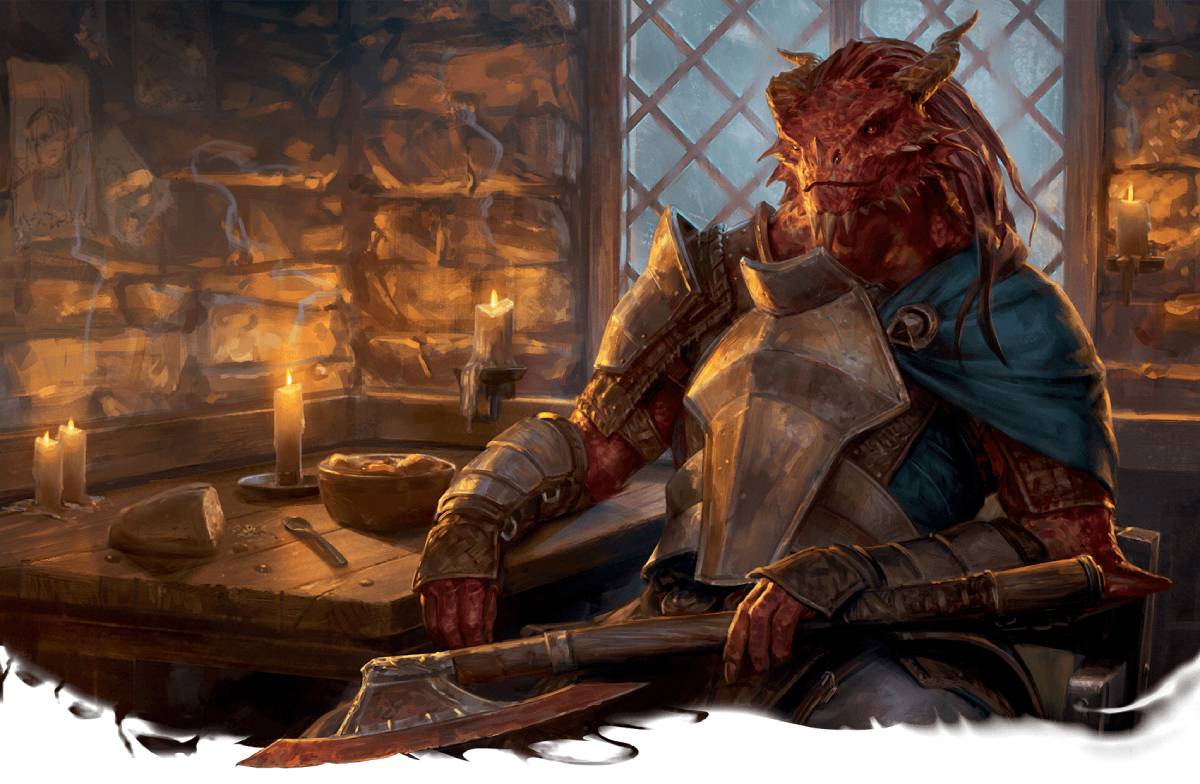
Fighters are the masters of the battlefield. The changes presented in this playtest packet allow them to be more versatile, changing out abilities to better suit the enemies they are preparing to face. It also ensures you’re always ready for a fight, allowing you to regain critical resources on a short rest.
You’ll find a few new base class features here, notably a couple that get you more use out of Second Wind, and Master of Armaments, which allows you to swap out the Mastery properties of all your weapons.
As for subclasses, you’ll see some changes to the Champion subclass, which was presented in the Player’s Handbook 5 Playtest, as well as some familiar faces, the Eldritch Knight and Battle Master subclasses. You’ll also get to meet the all-new Brawler subclass.
Excel Out of Combat With Tactical Mind
You may be a fighter, but that doesn’t mean you can’t rock at rolls that aren’t meant to deal damage. Tactical Mind allows you to expend a use of Second Wind to add a d10 to an ability check that you’ve failed. Better yet, your use of Second Wind isn’t expended if the bonus doesn’t turn your failure into a success. Handy on days when you’ll be discussing politics dressed in noble garb rather than hacking your enemies to pieces in heavy armor.
“One of the things we have been doing throughout this playtest is looking for ways to give classes that had little non-combat utility some way to contribute more outside of combat. We already did that in the barbarian with Primal Knowledge, we’ve done it in the ranger … this time around, it’s the fighter’s turn,” said Crawford.
Better Navigate the Battlefield and Learn From Your Mistakes
At 5th level, when you gain the new Tactical Shift feature, you’ll be able to move half your speed without provoking opportunity attacks when you use your Second Wind feature. This is great for getting to an ally to help out or getting out of dodge when you’re low on hit points.
Also, the 13th-level Weapon Adept feature has been replaced with Studied Attacks, which gives you advantage on an attack roll against a creature that you’ve missed with an attack.
Battle Master Gets More Strategic
The updates presented in Player’s Handbook Playtest 7 allow the Battle Master to come off as a studied strategist. When you get Student of War at 3rd level, you now get proficiency in a fighter skill as well as an artisan’s tool. Also, your 7th-level feature, Know Your Enemy, now tells you an enemy’s damage immunities, vulnerabilities, or resistances instead of their AC, ability scores, and hit points, and can be used as a bonus action.
Of course, the Battle Master’s main event, maneuvers, also see a big update. “We have now revisited every one of the maneuver options, and a number of them have gotten tweaks, in most cases, to make them easier or more fun to use,” said Crawford.
Get Ready for a Tussle With the New Brawler Subclass
Grapple enemies and bludgeon them with improvised weapons! This new subclass focuses on fighting dirty, grappling opponents, and attacking with unarmed strikes (or whatever you find lying around).
“The fighter’s identity has long been the master of weapons and armor, and we realized that what we hadn't yet explored in fifth edition is being a master of improvised weapons,” explained Crawford. “This fighter [subclass] is going to be able to pick up all sorts of odds and ends, and then apply weapon Mastery properties to them.”
The Eldritch Knight Is More Magical
This magic-martial hybrid has been tweaked from the 2014 Player’s Handbook to better allow Eldritch Knights to weave magic into their attacks. You are no longer restricted to choosing spells from the abjuration or evocation schools after 3rd level, and you can swap out cantrips when you gain a level. Also, War Magic and Improved War Magic now allow you to replace one of your many attacks with a cantrip or two of your attacks with a spell, respectively.
Sorcerer
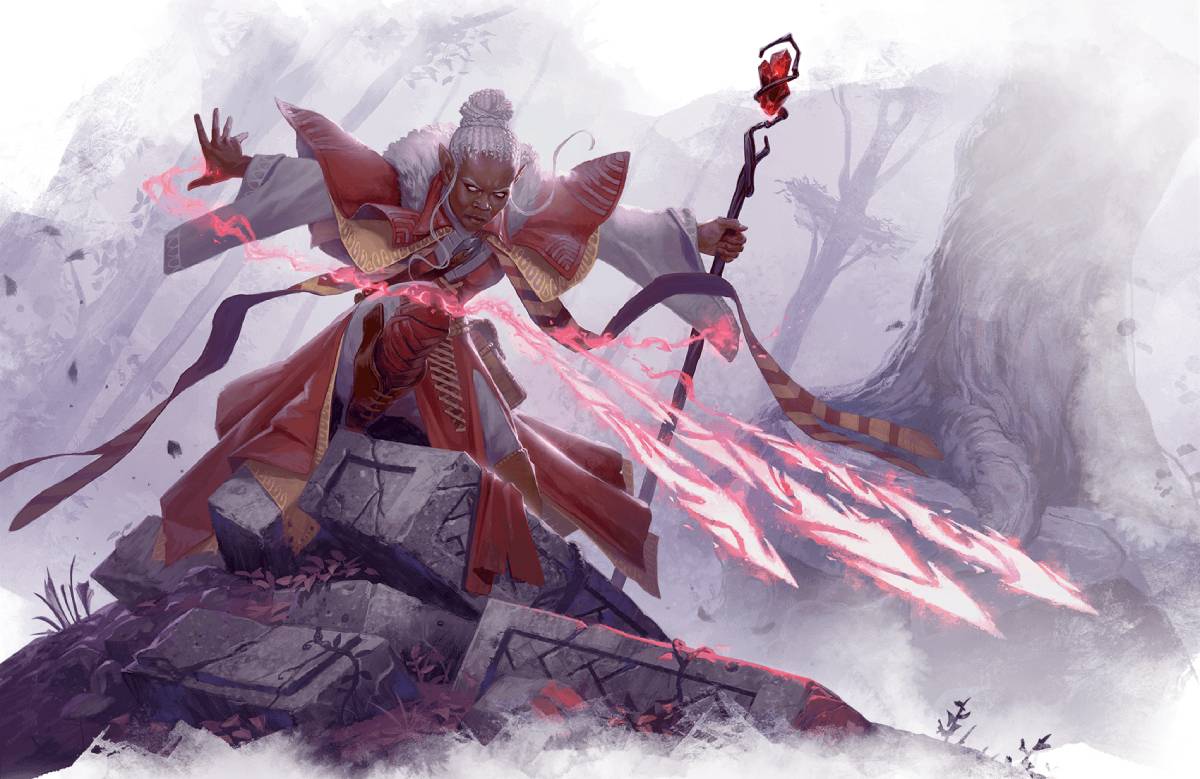
Sorcerers are arcane casters brimming with powerful, innate magic. In this Unearthed Arcana, their ability to bend magic to their will with sorcery points and innate class features has been dialed up a notch.
A pair of sorcerer subclasses also see changes in this UA, Draconic Sorcery and Wild Magic Sorcery. We’ll only cover the latter below as Wild Magic Sorcery has seen bigger changes.
Translating Flavor Into Features
“We are continuing to explore this notion of this boiling magic inside the sorcerer and giving it expression in game mechanics,” said Crawford. “Innate Sorcery is a fun way of expressing that.”
Instead of providing prepared spells, the 1st-level Innate Sorcery feature now gives you advantage on attack rolls from your sorcerer spells while also increasing their spell save DC by 1 for 1 minute.
As you level up, Innate Sorcery will grow more powerful. Sorcery Incarnate (7th level) allows you to use two Metamagic options on a single spell and Arcane Apotheosis (20th level) gives you a free Metamagic option each turn.
Twinned Spell Gets Another Revision
Of the Metamagic options we previously playtested, only Twinned Spell scored poorly, so we’re back with another version of it.
Twinned Spell once more allows you to target an additional creature with a spell but with a new restriction; this Metamagic option only functions with spells that can already be upcasted to target additional creatures (such as charm person and hold person).
This version of Twinned Spell allows us to avoid any confusing rules or breaking any spells that were never designed to target more than one creature at a time.
Wild Magic Sorcery Offers More Control
This updated sorcerer subclass gives you a modicum of control over your wild magic. The 3rd level feature Tides of Chaos allows you to roll on the Wild Magic Surge table after casting a sorcerer spell using a spell slot. Wild Magic Surge—also at 3rd level—gives you a chance of producing an effect from the Wild Magic Surge table after you cast a spell.
The capstone of this subclass also now lets you choose which Wild Magic Surge result you want, as long as the effect casts a spell or restores all your sorcery points. With this ability, you can cast fireball centered on yourself at will!
Warlock
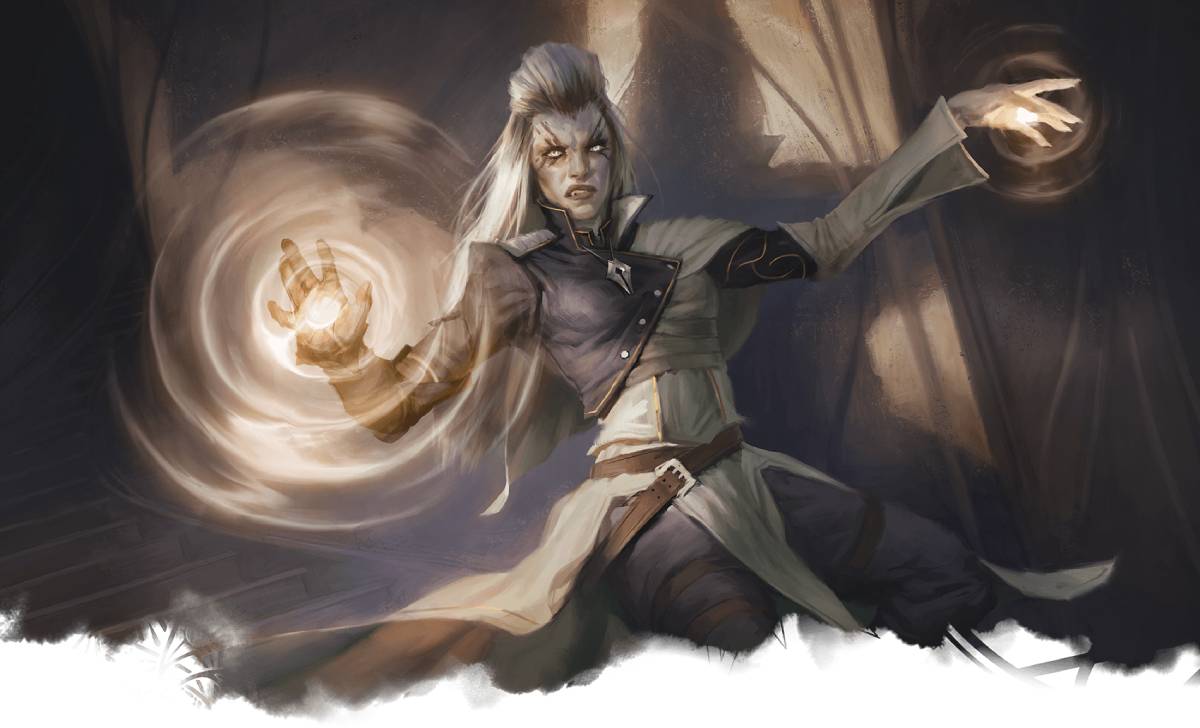
Warlocks are one-of-a-kind casters known for their bursty spellcasting, unique abilities granted by their patron, and, of course, their hexes and blasts. This UA has brought back the Pact Magic feature, restored Mystic Arcanum, and introduced a lengthy list of changes to the warlock’s beloved Eldritch Invocations.
We’ll also be taking a look at revisions to the Fiend Patron from the Player’s Handbook 5 Playtest, as well as the newly updated Archfey Patron (2014 Player’s Handbook), Celestial Patron (Xanathar’s Guide to Everything), and Great Old One Patron (2014 Player’s Handbook) subclasses.
Pact Magic Is Back With a Friend
Playtest feedback shows that you love this uniquely warlock feature, so we’ve brought it back. However, we do still want to solve for the class’s restrictive number of spell slots and heavy reliance on short rests. Here’s where the new feature Magical Cunning comes into play.
Magical Cunning allows a warlock to spend 1 minute each day conducting an esoteric rite to regain half their Pact Magic spell slots. This feature allows the warlock to cast their spells without fear of getting caught without spell slots should their party need to push ahead without a short rest.
Eldritch Invocations Reworked
The warlock’s invocations get an extensive facelift in this playtest packet. They now get their first invocation at 1st level, and the previous options under the Pact Boon feature are instead available as invocations.
There have also been many changes to the long list of invocations available to the warlock, which can be seen starting on page 28 of the playtest packet.
Patron Spells Are Always Prepared
For all of the warlock subclasses, the spells provided by your patron are now always prepared. This allows you to always feel like your warlock is thematic to the patron you chose (or the one that chose you).
Teleport Around the Battlefield With the Archfey Patron
Do you want to flit around the battlefield like an evasive fey creature? The updates to this subclass grant you access to the beloved bonus action teleporting spell, misty step. They also allow you to cast it a number of times equal to your Charisma modifier per long rest, on top of providing additional benefits whenever you cast it.
Want more misty steps? Once you hit 14th level, you’ll be able to cast it for free as part of the same action whenever you cast an enchantment or illusion spell!
Wizard
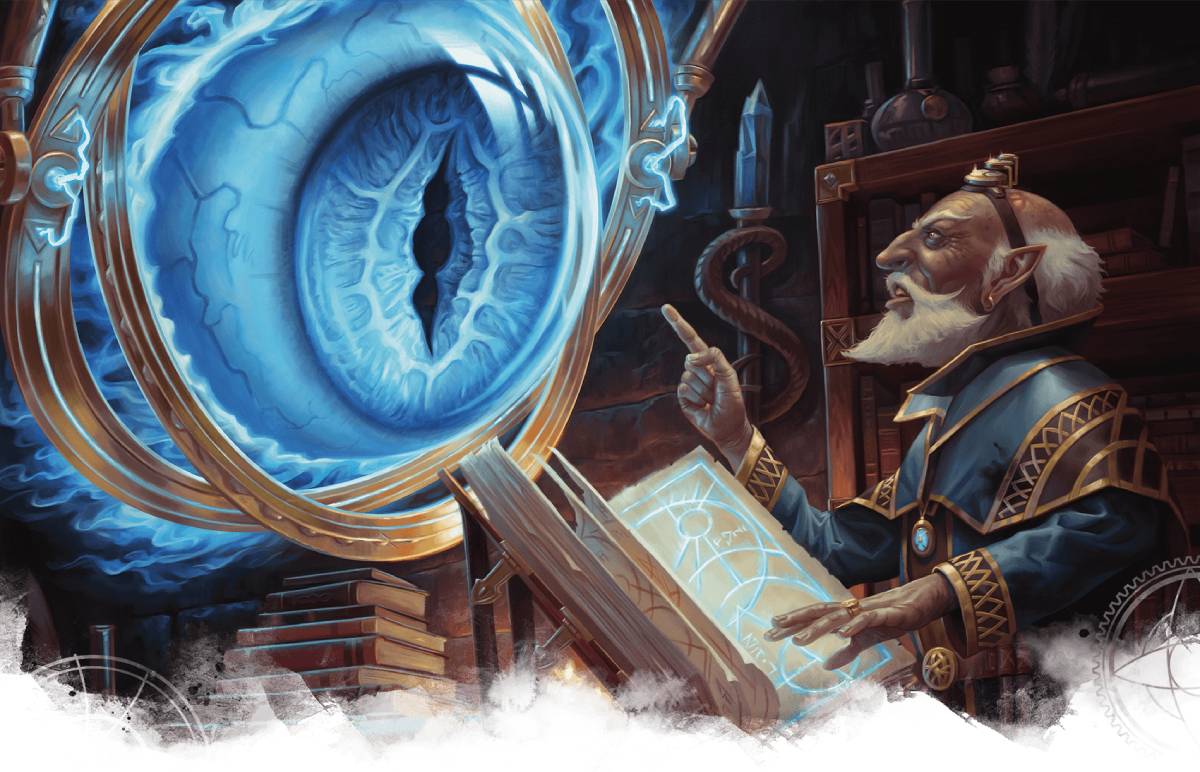
A true master of the arcane arts, wizards are scholars who have studied the secrets of magic’s inner workings. This playtest packet has simplified some of the wizard’s new features while also revising the core class features to more closely mirror the 2014 Player’s Handbook wizard.
These revisions bring back Arcane Recovery as a 1st-level feature, Spell Mastery as an 18th-level feature (with some changes), and Signature Spells as a 20th-level feature. You’ll also find that the wizard can swap out their cantrips, a feature first seen in Tasha’s Cauldron of Everything.
Modify Spell and Create Spell Have Been Nixed
We previously introduced create spell and modify spell as options for wizards looking to tweak and craft their own spells. But those options received a mixed response, so we’re putting them back on the shelf. However, Memorize Spell returns as a class feature.
Changes to Wizard Subclasses
This playtest includes a revised version of the Evoker subclass from the Player’s Handbook 5 Playtest, as well as updated versions of the 2014 Player’s Handbook Abjurer, Diviner, and Illusionist.
These subclasses have all seen their Savant feature updated so that you gain access to more spells of your chosen specialty when you get access to new spell slot levels. This replaces the rarely used previous feature, which discounted the cost of copying spells of your chosen school to your spellbook.
On top of that, these subclasses have seen some other minor updates:
- Abjurer: You can now expend spell slots as a bonus action to replenish your Arcane Ward’s hit points, and you can cast a buffed dispel magic as a bonus action with your 10th-level Spell Breaker feature.
- Diviner: Your 10th-level The Third Eye feature no longer makes you choose between seeing invisible creatures or into the Ethereal Plane. Instead, you can use this feature to cast see invisibility without expending a spell slot. You can also use it as a bonus action.
- Evoker: The Potent Cantrip and Sculpt Spells have been swapped around so that Potent Cantrip is now a 3rd-level feature and Sculpt Spells is a 6th-level feature. Also, Potent Cantrip now deals half damage when you miss with spells that require attack rolls.
- Illusionist: This subclass has seen some quality-of-life improvements. Malleable Illusions is now a bonus action, Illusory Self can be reused by expending spell slots, and Illusory Reality has been revised to be less ambiguous about its effects.
Your Feedback Matters
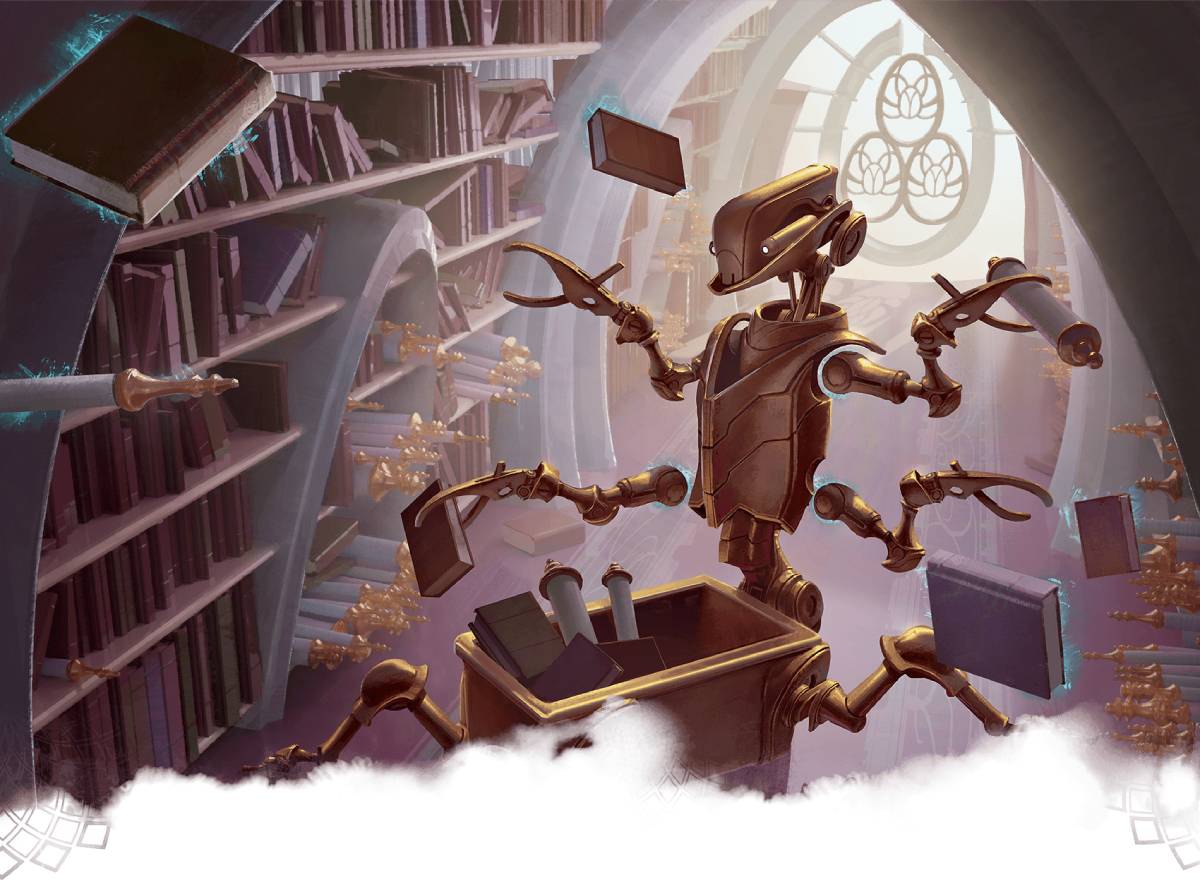
Whether you’re casually reading through Unearthed Arcana, theorycrafting new character builds based on it, or taking these materials straight into your games, your feedback is paramount to the 2024 core rulebooks.
The best way to get us your feedback are the UA surveys we regularly release. Keep an eye out in the future for a survey on this particular playtest packet. When the survey opens, let us know what you dislike, and if you love something, tell us why!
Michael Galvis (@michaelgalvis) is a tabletop content producer for D&D Beyond. He is a longtime Dungeon Master who enjoys horror films and all things fantasy and sci-fi. When he isn’t in the DM’s seat or rolling dice as his anxious halfling sorcerer, he’s playing League of Legends and Magic: The Gathering with his husband. They live together in Los Angeles with their adorable dog, Quentin.
Mike Bernier (@arcane_eye) is the founder of Arcane Eye, a site focused on providing useful tips and tricks to all those involved in the world of D&D. Outside of writing for Arcane Eye, Mike spends most of his time playing games, hiking with his girlfriend, and tending the veritable jungle of houseplants that have invaded his house.








-
View User Profile
-
Send Message
Posted Sep 8, 2023I'm guessing they'll mark all the 5e stuff as "Legacy" content and stop selling it, then they'll make the 5e2e stuff the default. In terms of rules interactions, if there's a conflict, the 5e2e stuff will be the default and I doubt there will be a toggle to say "use 5e rules."
-
View User Profile
-
Send Message
Posted Sep 8, 2023Same with the Sorcerers and the Paladins. Really weird to play a class were the source of your powers only comes into play well after you've already started getting some mileage out of them.
-
View User Profile
-
Send Message
Posted Sep 8, 2023I don't like these changes. I kinda understand warlock going back to pact magic. But why getting rid of arcane/divine/primal I love it. And the fact of bards making use of that make it better to try more build and diverse characters and it was so simple to see the list rather than searching in your own class.
-
View User Profile
-
Send Message
Posted Sep 8, 2023Is the Unearthed Arcana missing a couple of subclasses for the Sorcerer? Or did I just overlook something?
-
View User Profile
-
Send Message
Posted Sep 8, 2023This all seems, respectfully, all very rushed and poorly thought through. None of these changes will do anything to make things easier or more fun for anyone that I know and play with, we'd just find it frustrating. You ask me, the single only good idea that has ever been proposed by Unearthed Arcana so far is letting Warlock use Intelligence. But nope, we're not even getting that.
It's so irritating. I've always wanted intelligence for warlocks, all their rhetoric refers to warlocks as seekers of knowledge, making deals for secrets and such. Almost all their skill proficiencies use intelligence, the whole theme of it is being granted knowledge of hidden or unobtainable magic. It's not like they're being granted the uncontrollable ability to fart fire if they clench too hard.
-
View User Profile
-
Send Message
Posted Sep 8, 2023Because counterspell was too powerful. It was pretty much a must pick for Bards spell secrets as they were the best counterspellers (especially Lore). At higher level all you needed was to cast Glibness and no spell could survive against you. Also, not sure about your experience but most groups I've played with had multiple sources of counterspell because it was that good at shutting enemies down. This change is for the best. And if the enemy uses up their LR to force their spell through? Congrats! You have one less LR to worry about in trying to wear them down.
-
View User Profile
-
Send Message
Posted Sep 8, 2023Where was a new edition of D&D for 2028 hinted at? Any video or link you could point me to?
-
View User Profile
-
Send Message
Posted Sep 8, 2023It's not fun from a player perspective imo burning your 3rd lvl slot to halt an enemies spell, having them fail their con save in a crucial moment n just go no I'm doing it anyway. It's also not fun to succeed and have the enemy still have the resource to just cast it again next turn when you burned your own slot. With this change the enemy caster has all the reason to save the LR for when they try to escape and it's a guaranteed teleport abs that's if they even fail their con save. Counterspell is never guaranteed. It burns a decent lvl spell slot, required an ability check roll and can be countered by the enemy caster or their minions. Good positioning, invisibility, line of sight also factors into it. If my party I'm dming for has a party good at shutting down magic by having that spell then cool. That's something their good at doing.
-
View User Profile
-
Send Message
Posted Sep 8, 2023Those are the same thing.
-
View User Profile
-
Send Message
Posted Sep 8, 2023For the Sorc they literally just went "lol check out the Tasha's subclasses".
-
View User Profile
-
Send Message
Posted Sep 8, 2023I really wish WotC would remove 1/3 casters from the PHB, There is no reason why an Arcane Trickster or Eldritch Knight wouldn't be able to cast as well as a Paladin, Artificer, or Ranger. I mean honestly BOTH 1/3 caster options imply they specialize in adding Magic to another discipline. We should have Full Casters and 1/2 Casters, and do away completely with 1/3 casters. I will say the Eldritch Knight minus it lesser casting ability than a Paladin, has a MUCH improved War Magic feature. It now seems to match the Bladesinger Extra Attack. Makes creating a new way of creating a Gish
-
View User Profile
-
Send Message
Posted Sep 9, 2023bruh. warlock needs their subclass at lvl 1
-
View User Profile
-
Send Message
Posted Sep 9, 2023Almost all of these changes are both common sense and fix the existing issues. Although I could nitpick a couple of revised invocations I think this whole document is a step in the right direction.
That said, it's a step in the right direction for fixing PHB-era 5e. Things that should have been patched a long time ago and a lot of it I was doing a version of in my home games. Warlocks having the choice of Cha or Int should remain an option.
-
View User Profile
-
Send Message
Posted Sep 9, 2023It is truly astounding how you consistently ignore the actual problems with the revised PHB in favor of complete non-issues. There are plenty of things in the new UA that are dumb (I would absolutely be singing a different tune if you mentioned Twinned Spell instead), but for you, the real tragedy is...
*checks notes*
Bear Barbarians aren't overpowered insta-win characters, and the Totem Warrior has a different name...
Have... have you considered playing a different Tabletop? I hear they're pretty much all the same.
-
View User Profile
-
Send Message
Posted Sep 9, 2023Got captivated by WARLOCK:
OTHERS
Overall some interesting, some very good, (and some overpowered) ideas. And some loss of areas we liked (but could learn)
SUBCLASSES
I agree with the majority though. Certain classes NEED a subclass like option the start. Clerics NEED their gods (unless they just aren't helping till their belief is there? Maybe?) Warlocks NEED a patron. Maybe even if just some certain spell access.
- Or are levels 1 and 2 now considered training? Always felt that way with paladins. Great dip before you make your oath! (Just feels smite is a bit cheeky then)
-
View User Profile
-
Send Message
Posted Sep 9, 2023I can empathise with losing your spell slot while the enemy keeps theirs although I strongly suspect that this is for the players' benefit. Why? Because most enemies in modern format do not use the spell slot system, they have uses per day which the spell does not address i.e. once spent they're gone. Now if a PLAYER were to get hit with a CS, suddenly they do not lose their resource. Also it really does not take a specific build to make the group good at spellcaster shutdown - the spell itself does all the heavy lifting and I have yet to see a spell survive a barrage of counterspells. Counterspell never being guaranteed is blatantly false when you have high level bards as well since Glibness is such a good pick on its own. Only spells that survive encounters are ones cast by sorcerers with subtle spell and really, how many of those are you going to use in your campaign? Any more than one encounter and your players will accuse you of screwing them over because they can't use their I-win button.
This change incentivises players to try other, more overlooked spells in their battles and that is a good thing. Finally, enemies escaping means you get to have recurring villains. Why would that be a bad thing?
-
View User Profile
-
Send Message
Posted Sep 9, 2023Counterspell is so good! Finally not a "must have, one tap" spell. It is awful when you can say one word and end the whole action. Now it has cost, it has normal save.. amazing.
-
View User Profile
-
Send Message
Posted Sep 9, 2023In my opinion, it was a mistake to have only included the option to choose magics with one action in "Spell Mastery". Being a level 18 skill, it should be kept as it was before.
-
View User Profile
-
Send Message
Posted Sep 9, 2023Don't drop the 3 spell lists, that was one of my favorite new features!
-
View User Profile
-
Send Message
Posted Sep 9, 2023They could have easily solved this issue if they went the pf route of having 4 spell groups: one for cleric and paladin, one for druid and ranger, one for wizard sorcerer and warlock and one for bard and artificer.